A Glimpse into the Realm of Goodness
from a Cup of Pure Tea
Iljiam Hermitage of Daeheungsa Temple
Text by. Editorial Department Photo by. Editorial Department
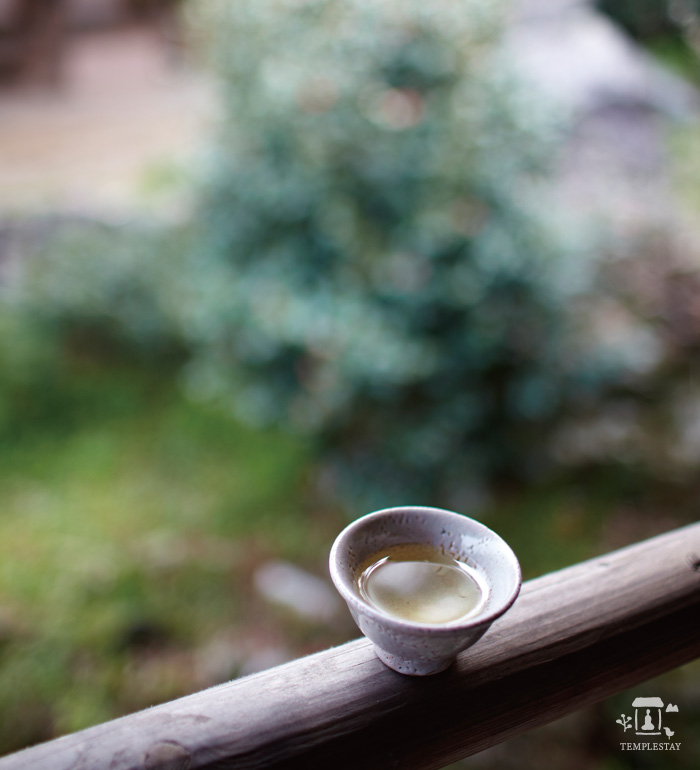
I drink a cup of tea resembling a jade flower.
The wind rises under my armpits, and
my light body has already reached a pure place.
The bright moon is my candle and my friend.
The white clouds spread out a mat,
and also serve as a folding screen.
-Verse 16 “The Body Reaches a State of Clarity,” Dongdasong
(Hymn in Praise of Eastern Tea)
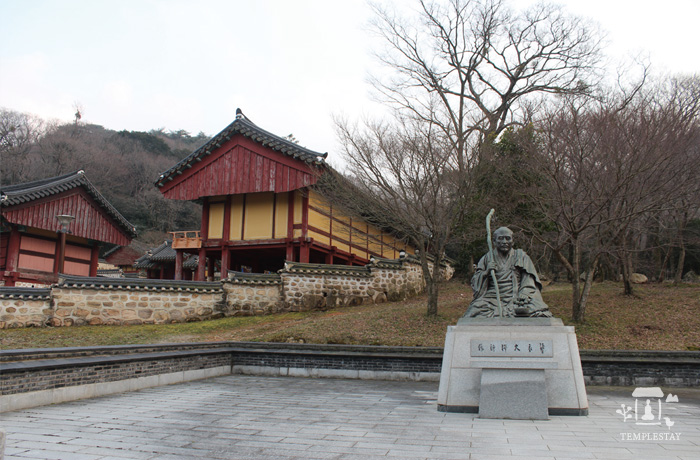
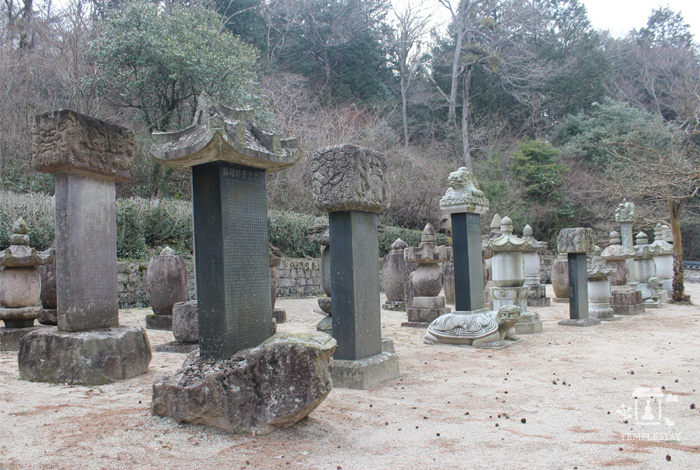
A cup of tea as pure as the finest jade. How special was that tea to say that it created a breeze beneath one's arms and took one to a magical realm upon drinking it? Considering that even the moon and clouds serve as a background for lighting up a tea table, my curiosity is understandable. To experience this special tea loved by Seon Master Choui (1786―1866), I headed to Daeheungsa Temple on Mt. Duryunsan in Haenam, located at the southernmost tip of the Korean Peninsula. Daeheungsa Temple is a 1,000-year-old temple founded during the Baekje Dynasty. Iljiam is a place sacred to Korean tea culture and is a hermitage subordinate to Daeheungsa. Iljiam is where Master Choui spent the last 40 years of his life, writing Dongdasong and Dasinjeon (lit. Commentary on the Tea Deity).
Without needing to elaborate, Master Choui is referred to as a sage who revived the tradition of tea in Korea. As a “tea sage,” his symbolism is still relevant today.
In the early spring of March, at Daeheungsa Temple—a five or six hour drive from Seoul—the plum blossoms are already in bloom, despite the cool weather. The tea tree fields at Iljiam Hermitage are filled with green energy even before the trees have begun to sprout new buds. There is still a long time left until it is time to pick tea leaves (Gogu, the 20th day of the 4th lunar month), so it is too early to brew fresh tea.
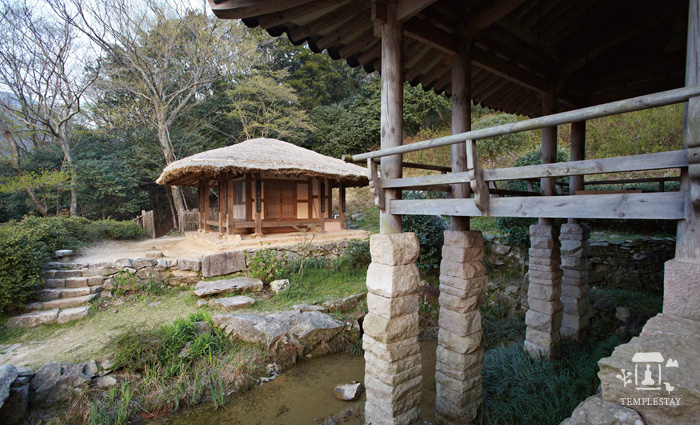
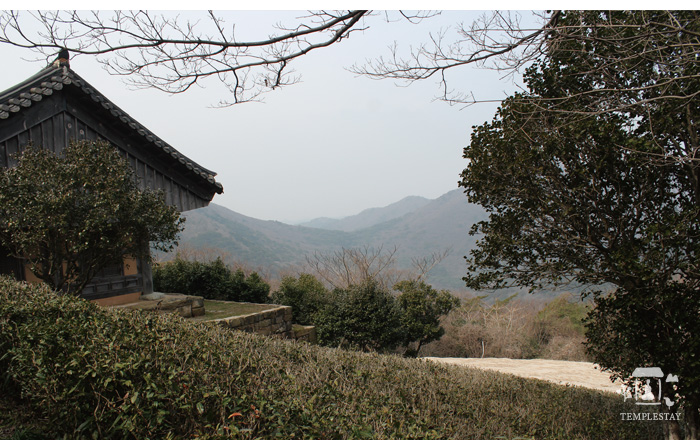
Upon entering Daeheungsa Temple, Ven. Beobeun, the Templestay guiding monk, greets guests warmly.
The temple compound was already crowded with visitors from all over the country in search of spring.
On my way to follow in the footsteps of Master Choui, I took a quick walk to the monks' stupa field. Among the numerous stupas enshrined in Budojeon Field on the left side of the temple compound's entrance is the stupa of Master Choui. There are as many as 56 monks' stupas enshrined here, and Daeheungsa Temple is also the temple with the largest number of monks' stupas in Korea.
After visiting Budojeon Field and heading to the temple compound, I see changes everywhere. The entrance is gradually being transformed into a walking trail. Starting with a trail named “Ancient Road of the Millennium Forest,” walking trails for contemplation are being created one at a time while taking advantage of the characteristics of each section of trail under the concept of “road garden.”
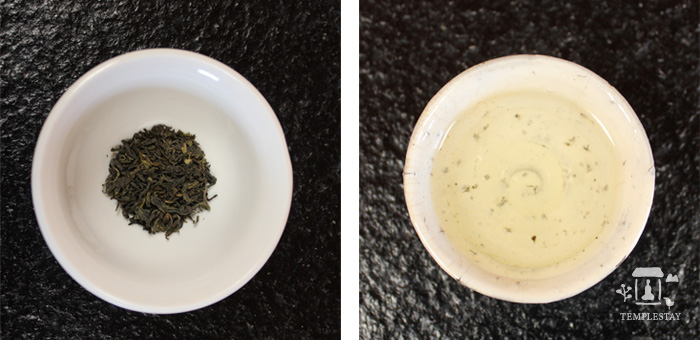
Efforts are also in full swing to restore and continue the tradition of tea culture that has been passed down from Master Choui. The temple's tea-making facility was already renovated last year, and the Tea Culture Experience Center was nearing completion as a space where more people could experience tea culture. The tea made here is available to the public under the name “Daeheung Gwaneum Nokda.” And the empty lot, previously occupied by private houses, is also scheduled to be renovated in support of the nearby tea fields.
Although the name “Daeheung Gwaneum Nokda” is new, the tradition of making tea at Daeheungsa has never stopped. Every year around Gogu, monks at Daeheungsa Temple roast tea leaves picked from the wild tea fields for several days to make green tea.
There are about 7 tea fields managed by Daeheungsa Temple, including one at Iljiam Hermitage that is about 30,000 pyeong in size (100,000 square meters or 25 acres). Although growing and processing tea requires extensive communal labor and devotion, the quantity of tea made is not great, so it is mainly offered as an offering during ceremonies or consumed by the monks themselves.
The process of making tea is not easy as it has to be made in a way that senior monks have memorized and passed down based on the teachings of Master Choui. Therefore, monks experienced in making tea take the lead and determine the taste of that year's tea. The first tea brewed is tasted by senior monks, including Ven. Boseon, the Guiding Seon Master (Josil) of Daeheungsa Temple. They also provide advice when needed on detailed matters, including the temperature for roasting the tea. Since wild tea leaves grown in a clean environment are carefully roasted according to traditional tea-making methods, the taste and energy of the tea are unrivaled.
As a rule, tea leaves should be picked and roasted on the same day. The process of making tea requires roasting, rolling, and drying. In particular, roasting requires repeatedly heating the tea leaves at high temperatures several times while making sure they do not burn. Each roasting lasts 5 to 10 minutes and involves placing your hand in a cauldron heated at up to 280℃ to 350℃, which makes the task difficult. Since you have to check the heat constantly and turn the leaves by hand countless times, experience and know-how are essential.
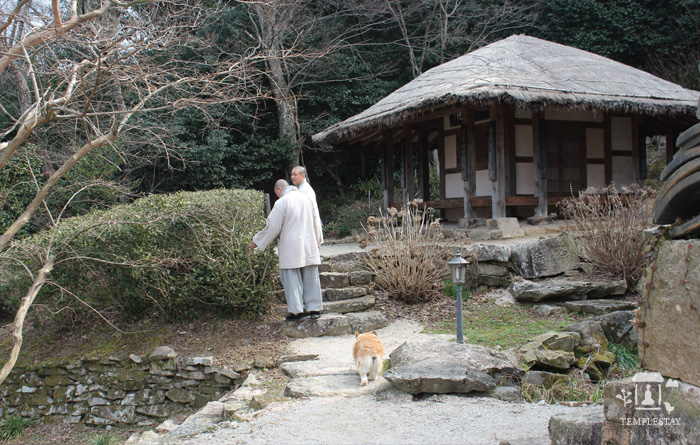
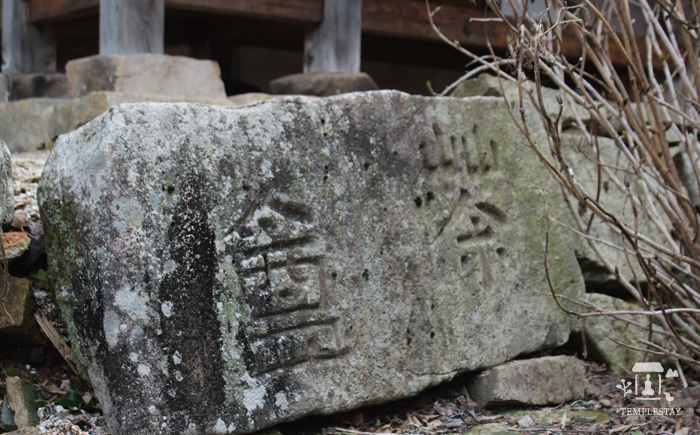
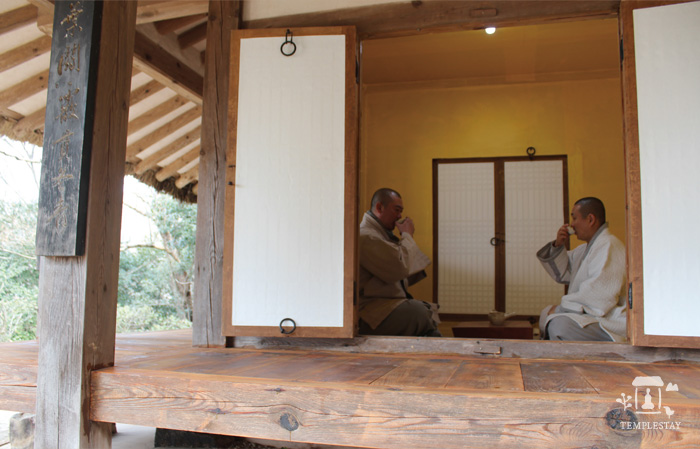
Spreading out the roasted tea leaves on cotton cloth and rubbing them with your hands is a process called rolling. When you rub the tea leaves on the cotton cloth vigorously with both hands, the fine white hairs on the tea leaves clump together like a resin and during this process, the toxic and strong components of the tea are removed. Special effort is also required in “flavoring,” which involves drying the tea leaves again after the rolling process is completed, and then roasting them again over low heat.
The method of actually brewing the tea is also slightly different. The usual way to brew green tea is to boil water and then let it cool to about 70―80℃, but Daeheungsa's green tea is brewed with very hot water. Still, the tea is not bitter and has a clear, simple taste and scent. This is the essence of making the traditional tea called “Choui Tea,” inherited by Daeheungsa Temple. As great as the taste is, the process is not easy. After working non-stop very hard for several days, one loses feeling in their fingertips.
In early spring—just before the production of new tea—the quantity of available tea is sparse, so I was unable to experience the taste of “Daeheung Gwaneum Nokda.” I walked to Iljiam Hermitage feeling a bit disappointed. Although it is about an hour's walk from Daeheungsa Temple (15 minutes by car), the steep slope is unusual for this area. As I arrived at Iljiam, the expansive scenery took my breath away. Looking down at Mt. Duryunsan with my back to Chojeong Hut, where Master Choui once stayed, I saw tea trees everywhere the sunlight hit. Each deep green tea leaf seemed to radiate vitality against the background of the blue sky
At the age of 39, Master Choui built a thatched hut measuring one bay in length and width, named it Iljiam, and stayed there for 40 years until the end of his life. He planted tea tree seeds, cultivated tea, and caught water flowing from crevices in the rocks, a spring he called Baeguncheon. He roasted and made tea, brewed tea with spring water, drank it, and entered concentration while doing Seon practice. He also composed poetry, painted, and wrote. Here, he also wrote Dongdasong, which some consider a scripture for tea, and Dasinjeon.
A special friendship developed between him, Kim Jeong-hui (aka Chusa), and Jeong Yak-yong (aka Dasan), a friendship maintained through tea. There are countless anecdotes about Choui and these two Confucian scholars who dominated the era. In particular, it is interesting to note there is still a record of Kim Jeong-hui, while in exile on Jeju, sending a letter asking Master Choui to send him some tea. At Iljiam's Chojeong Hut, a stone engraved with the word “Dagam (lit. Tea Niche)” casually sits on the stone wall facing the pond. The calligraphy on the stone is said to be in the style of Master Choui.
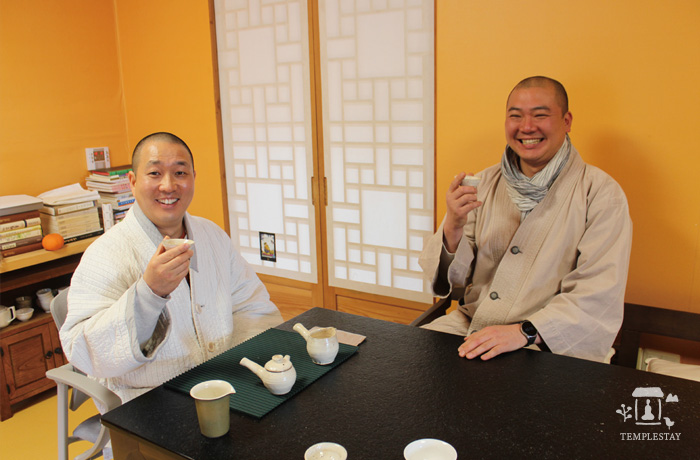
Perhaps because my mind had calmed down after giving up the thought of having some tea, I was able to taste the green tea served by Ven. Beopgyeong, abbot of Iljiam Hermitage. Indeed, it had a pure and clear color, and the scent and taste were sweet and clean. As soon as I took a sip, my eyes seemed to become brighter. At some point, I may have felt a wind rising under my arms.
Ven. Beopgyeong said, “It is said that tea prevents torpor and restlessness. It calms and awakens the mind. The reason monks drink tea is clear. It is because it helps with their Buddhist practice. I feel that tea and Seon are one every time I drink tea.”
Opening the door to Chojeong Hut, we moved our tea gathering to the hut. Ven. Beopgyeong and Ven. Beobeun are dharma brothers. Even as they comfortably laughed and chatted together, time stopped for a moment when they took a sip of tea.
In Dasinjeon, Master Choui says, “If you drink tea alone, it is divine; if you drink it with two people, you can feel a good mood; if you drink it with three or four people, you will feel happy and pleasant; if you drink it with five or six people, it will be ordinary and unconstrained by formalities; and if you drink it with seven or eight people, it will be just sharing a drink.”
Did the wind arise under the monks' arms the moment they had a cup of tea? Or did they just feel good? It's not that important to a visitor like myself. I am just satisfied with having experienced Master Choui's beloved cup of tea at Daeheungsa Temple and Iljiam Hermitage. Upon leaving Iljiam, I decided to visit this place again around Gogu, and taste “Daeheung Gwaneum Nokda.”
Daeheungsa Temple
Daeheungsa Temple~3
http://www.daeheungsa.co.kr





